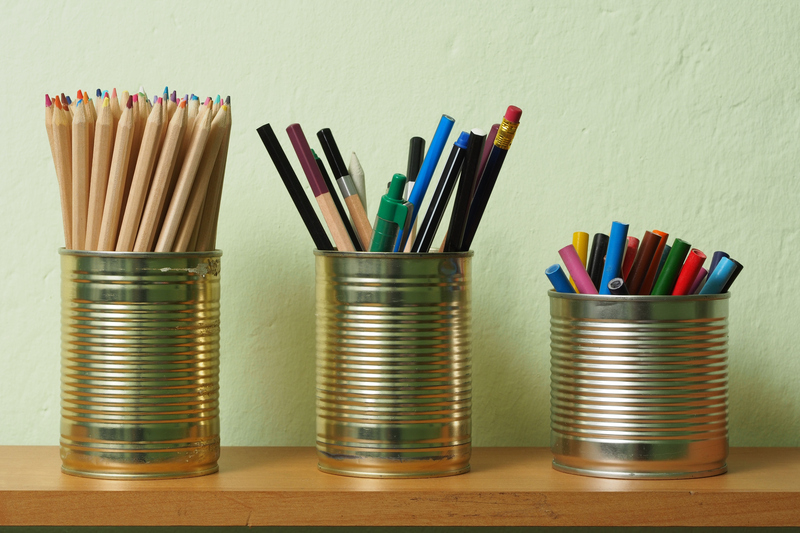Reduce, Reuse, Rethink: Lessening Plastic Impact
Plastic pollution is one of the most significant environmental challenges facing our planet today. Every year, millions of tons of plastic waste enter the world's oceans, threaten wildlife, and contaminate food chains. While plastic has revolutionized modern life with its versatility and convenience, its widespread use has come at a steep ecological cost. Fortunately, by embracing the principles of Reduce, Reuse, and Rethink, both individuals and communities can take meaningful steps to lessen plastic's impact on our environment.
Understanding the Plastic Problem
Plastics are synthetic polymers that have become embedded in our daily lives--from packaging and food containers to electronics and automotive parts. Their popularity stems from being lightweight, durable, and inexpensive. However, the same properties that make plastics so useful also make them environmentally persistent, sometimes taking centuries to decompose.
The Impact of Plastic on the Environment
- Marine Life at Risk: Over 8 million tons of plastic end up in oceans annually, affecting marine creatures who ingest or become entangled in debris.
- Microplastics Contamination: Tiny plastic particles have been detected in drinking water, seafood, and even table salt, posing risks to human health.
- Greenhouse Emissions: The production and incineration of plastic continues to contribute to climate change by releasing CO2 and toxic chemicals.
- Landfill Overflow: Single-use plastic items make up a large portion of landfill waste, leaching harmful substances into soil and groundwater.

Reduce: Cut Down Plastic Consumption at the Source
Reduction is the most straightforward and impactful strategy for minimizing plastic pollution. By consciously choosing to reduce plastic use, individuals and organizations can create an immediate positive impact.
Practical Steps to Reduce Plastic Waste:
- Opt for Loose Produce: Choose fruits and vegetables without packaging instead of pre-packed alternatives.
- Use Refillable Bottles: Switching to reusable water bottles significantly cuts down single-use plastic bottle consumption.
- Avoid Single-Use Plastics: Say no to straws, cutlery, plates, and shopping bags made of plastic. Carry your own reusable options.
- Purchase in Bulk: Buying in bulk reduces the overall packaging required and results in less waste.
- Support Plastic-Free Brands: Patronize companies dedicated to eco-friendly, minimal, or biodegradable packaging.
Reduction not only shrinks personal waste but also sends a strong message to manufacturers and retailers that consumers prefer sustainable alternatives.
Reuse: Giving Plastics a Second Life
The old adage, "Don't throw it away if it can still be used," is crucial for plastic sustainability. Reusing extends the life cycle of plastic items, mitigating their overall environmental impact.
Creative Ways to Reuse Plastics
- Repurpose Packaging: Turn plastic containers into organizers for tools, stationery, or kitchen supplies.
- DIY Projects: Use plastic bottles for growing plants, constructing bird feeders, or as funnels for gardening or car maintenance.
- Reusable Shopping Bags: Carry strong, washable bags made from recycled plastic or other sustainable materials.
- Recycled Art and Construction: Schools and artists can incorporate plastic waste into sculptures or educational materials.
- Refill Initiatives: Participate in programs where you can refill plastic containers for items like cleaning products, shampoo, or cooking oil.
By embracing reuse, we extend the utility of plastic, reducing the demand for new production and preventing waste from entering landfill or waterways.
Rethink: Innovating and Changing Perspectives
The third, and perhaps most transformative, element of the triad is to rethink plastic use altogether. Rethinking involves adopting innovative solutions and changing cultural attitudes about plastic consumption.
Strategies to Rethink Plastics in Daily Life
- Choose Alternates: Select products made from glass, metal, bamboo, or rapidly biodegradable materials when possible.
- Support Circular Economy: Look for products designed to be reused, repaired, or recycled into new goods.
- Advocate for Policy Change: Support legislation that limits single-use plastics and incentivizes sustainable packaging innovation.
- Educate & Inform: Share knowledge about plastic pollution and the importance of environmental stewardship in your community.
- Participate in Clean-ups: Join local initiatives aimed at removing plastic waste from natural habitats and public areas.
When individuals and organizations start to rethink their relationship with plastic, it sparks systemic change, inspiring progress toward a cleaner, greener future.
Alternatives to Common Plastics
A crucial part of minimizing the plastic problem is to identify and switch to more sustainable materials. Below are examples of eco-friendly alternatives:
- Bamboo: Used for utensils, straws, toothbrushes; naturally biodegradable and renewable.
- Bioplastics: Plant-based plastics produced from cornstarch or sugarcane; some forms are industrially compostable.
- Pulp and Paper: Suitable for packaging, plates, and cups; recyclable and biodegradable.
- Glass and Stainless Steel: Excellent for bottles, food containers, and cutlery due to their durability and recyclability.
- Cloth: Cotton bags and wraps are reusable and have a lower environmental impact compared to single-use plastics.
Addressing Microplastics and Their Hidden Dangers
Microplastics are tiny plastic particles less than 5mm in size that originate from larger debris breaking up, as well as from fibers in synthetic clothing and beads in personal care products. They pose a serious threat to both wildlife and human health.
How to Reduce Microplastics:
- Wash Synthetic Fabrics Less: Limit washing of polyester, nylon, and acrylic clothes or use filters that capture microfibers.
- Say No to Microbeads: Avoid cosmetics and cleaning products that contain microbeads.
- Choose Natural Fibers: Prefer clothing made from wool, cotton, and hemp.
- Use a Guppyfriend Bag: Special wash bags that capture microplastics released during laundering.
Recycling: Not a Cure-All, but Part of the Solution
Recycling can help divert plastics from landfills, but it's important to treat it as a last resort after reduction and reuse. Many types of plastics are difficult or economically unviable to recycle, and contamination rates are high. Still, recycling plays a pivotal role in lessening overall plastic impact when implemented effectively.
How to Improve Plastic Recycling
- Know Your Plastics: Learn which local plastics are accepted by recycling programs--typically PET, HDPE, and sometimes polypropylene.
- Clean and Separate: Ensure items are rinsed and sorted according to guidelines to avoid contamination.
- Participate in Drop-Offs: Use local collection points for specialty plastics such as bags and film, which curbside programs may not accept.
- Demand Recycled Content: Choose products and packaging labeled as containing post-consumer recycled plastic.
The Role of Business and Innovation in Reducing Plastic Impact
Businesses have a unique position to drive large-scale change in the fight against plastic pollution. By adopting sustainable practices, innovating products, and educating consumers, companies can leave a markedly positive imprint.
Corporate Strategies for Sustainable Plastics Use
- Eco-Design: Develop packaging and products that use less material and are easier to recycle or compost.
- Take-Back Programs: Encourage consumers to return packaging for reuse or recycling, creating closed-loop systems.
- Supply Chain Transparency: Provide clear information on the material origins and end-of-life recovery methods.
- Employee Engagement: Educate staff regarding sustainable choices and incentivize low-waste office culture.
With consumer demand rising for eco-friendly products, organizations that invest in innovation and responsibility stand to gain market trust and loyalty.
The Power of Community Action
Collective efforts amplify the impact of individual commitments to reduce plastic use. Whether participating in clean-ups, advocating for change at the policy level, or establishing local zero-waste groups, community action is a key driver in lessening the plastic footprint.
How Communities Can Collaborate
- Organize Clean-Up Events: Regular beach, river, and park clean-ups reduce pollution and raise awareness.
- Eco-Education Initiatives: Offer workshops and seminars on sustainable living, targeting schools and community centers.
- Lobby for Local Bans: Advocate for prohibitions on single-use plastics or for city-wide composting systems.
- Shared Resources: Develop community libraries for tools, kitchenware, or party supplies to reduce single-use reliance.

The Future: A Circular Approach to Plastics
The ultimate goal is to create a circular economy for plastics, where materials are continually repurposed and waste is minimized. This model requires innovation, infrastructure, and systemic change:
- Designing for Longevity: Products and packaging should be built to last or be fully recyclable.
- Investment in Recycling Technologies: Advanced processes like chemical recycling can break down more plastic types safely and efficiently.
- Producer Responsibility: Manufacturers must take responsibility for the entire lifecycle of their products, including disposal and recycling.
By making reduction, reuse, recycling, and rethinking core parts of our consumption habits, we foster a healthier planet for generations to come.
Conclusion: Empowering Change--Individual and Collective
Addressing the enormous challenge of plastic pollution requires coordinated effort across sectors and societies. The journey starts with each of us embracing the reduce, reuse, rethink philosophy--making conscious choices, encouraging innovation, and empowering our communities. By taking informed action, supporting ethical businesses, and advocating for policy reform, we can significantly lessen the impact of plastics on our natural world.
Every small step makes a difference--from bringing your own bag to supporting systemic change. Together, we can rewrite the story of plastic and pave the way for a cleaner, brighter future.